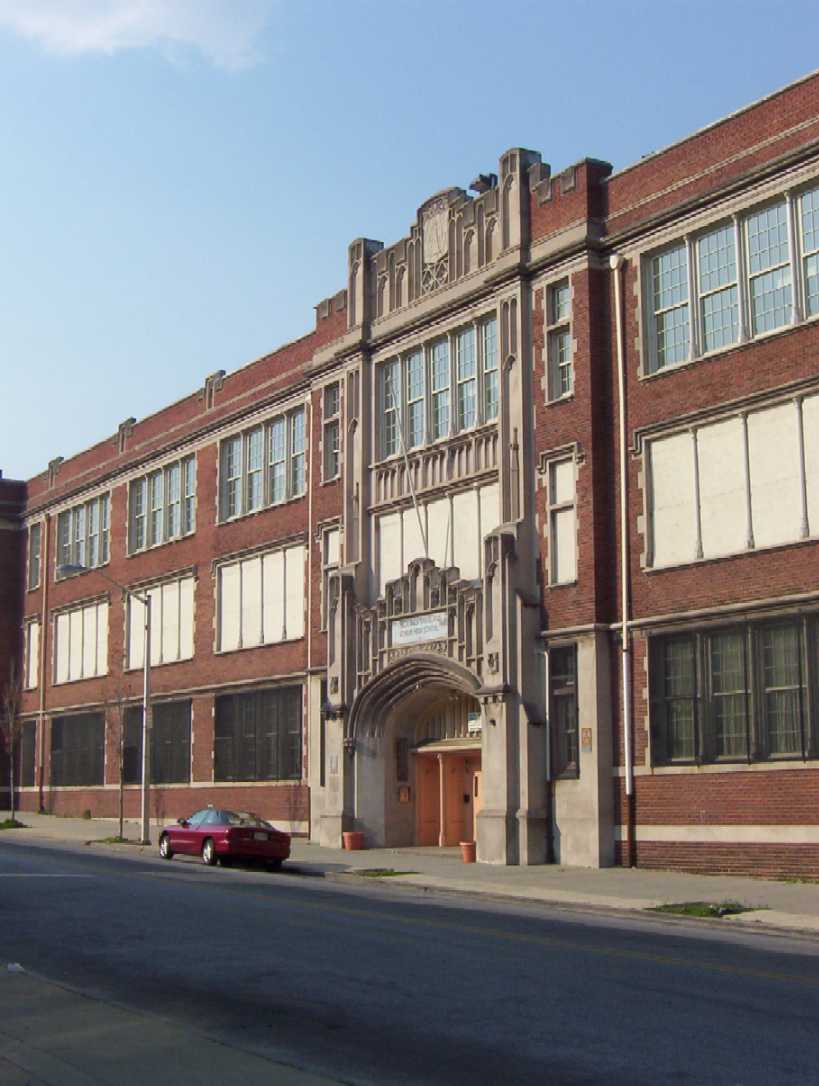
Photo credit:
C. Andrew Lewis, 04/17/2003
|
Frederick Douglass High School
Inventory No.:
B-4210
Date Listed:
5/18/1988
Location:
1601 N. Calhoun Street, Baltimore, Baltimore City
Category:
Building
Period/Date of Construction:
1923-1954
Architect/Builder:
Architects: Owens and Sisco
|
|
Description:
Completed in 1924, the original Frederick Douglass High School is located within a residential neighborhood of three-story row houses known as Sandtown-Winchester. The building is primarily a large three-story brick structure with a flat roof. The three primary facades exhibit the stylistic details of Late Gothic Revival design, are punctuated by regularly displayed classroom fenestration framed in stone "quoins" and have entries accentuated by shallow, pointed stone arches, and are capped by a brick parapet with stone battlements. The school is roughly square in plan with classrooms arranged about the perimeter of a centrally placed auditorium. Interior finishes and detailing are simple. Floors are either wood or terrazzo, and the walls and ceilings are typically painted plaster. The original window sashes are missing in many areas. The interior plans and decorative detailing remain essentially intact to the 1920s. On the back of the property is a c. 1880 four-story brick building which was renovated and incorporated into the school when the larger building was erected. Additions were made in the 1950s and 1970s. To the north, extending from the high school building to Cumberland Street, is a paved playground area.
|
Significance:
The Frederick Douglass High School at 1601 North Calhoun Street is significant for its association with the development of quality instruction for black children within the Baltimore City public school system. Built in 1923-24, it is the first public high school building in the city, and believed to be the first in the State of Maryland, specifically erected for blacks and was the only secondary school in the Baltimore area that could be attended by black students through the 1930s. In its provision of space for "lower" vocational training and classrooms for "higher" academic pursuit, the building's design embodied what was the prevailing philosophy toward black education of the period. The building is characterized by an elaborately decorated exterior, though somewhat plainer than the standard Baltimore school of the period, with a simple interior plan and decorative detailing. It remained as a "colored" high school until 1954 when the Baltimore school system adopted the desegregation policy of the U.S. Supreme Court's decision and a new Frederick Douglass High School was established on Gwynns Falls Parkway.
|
|